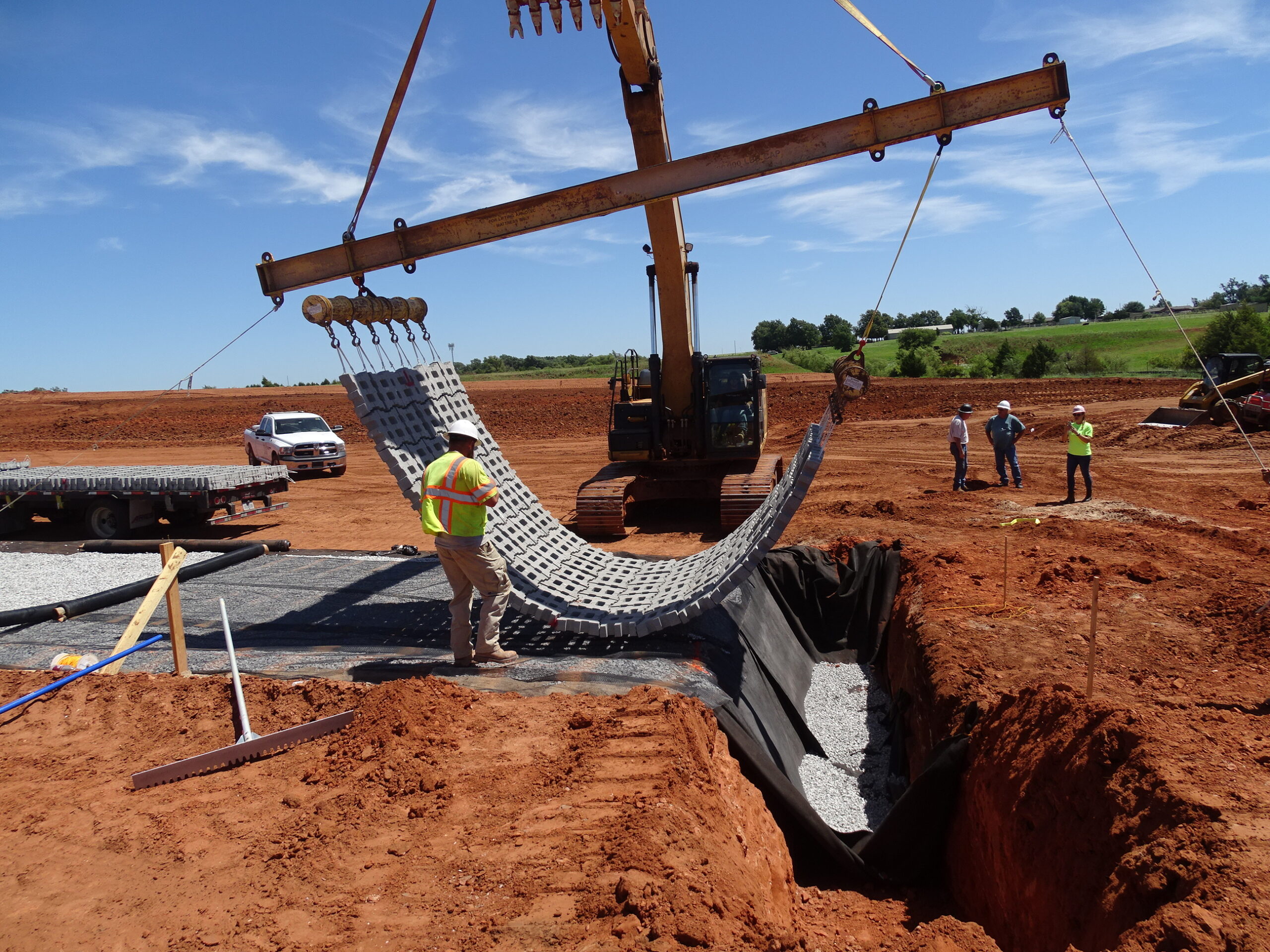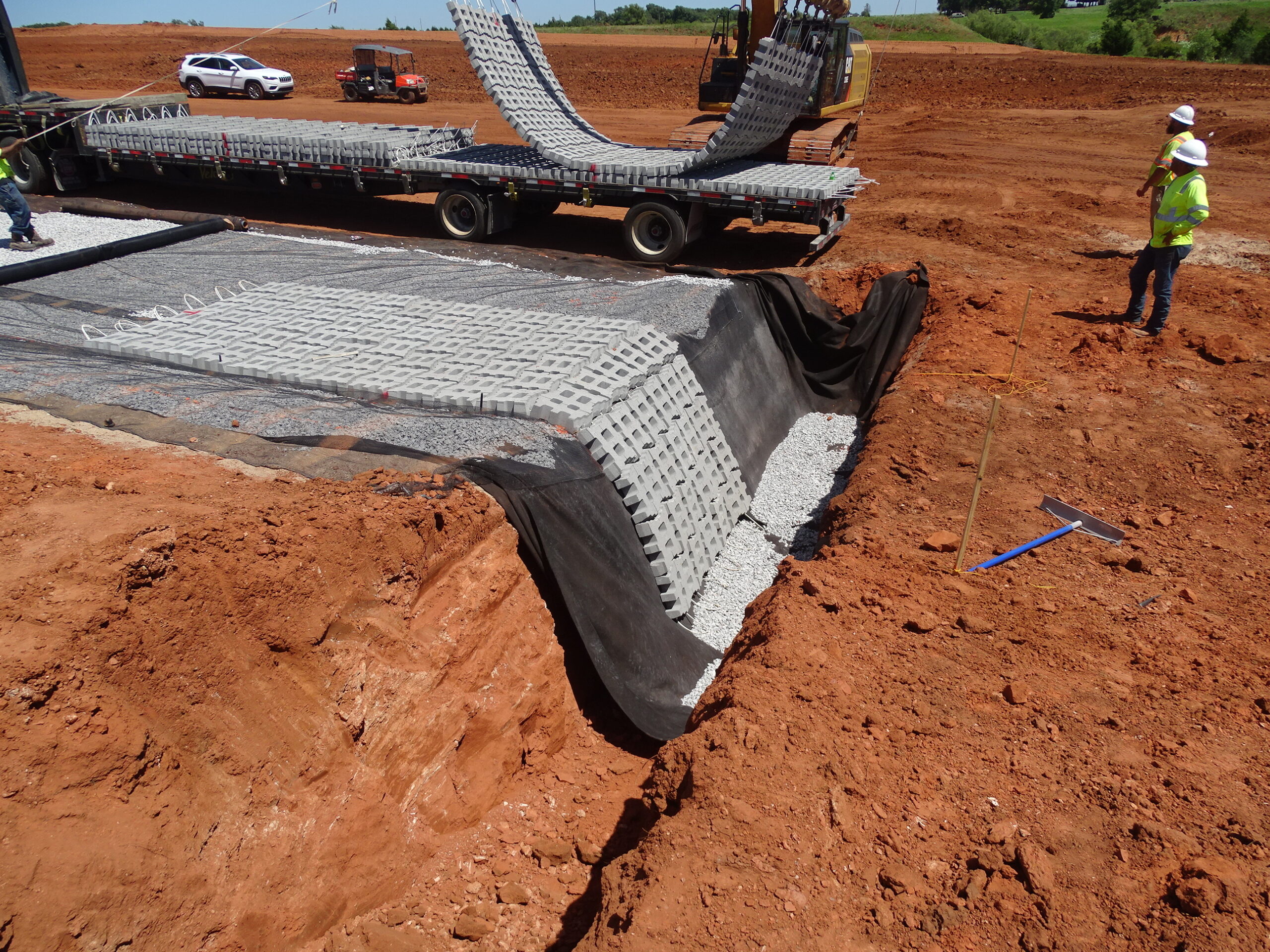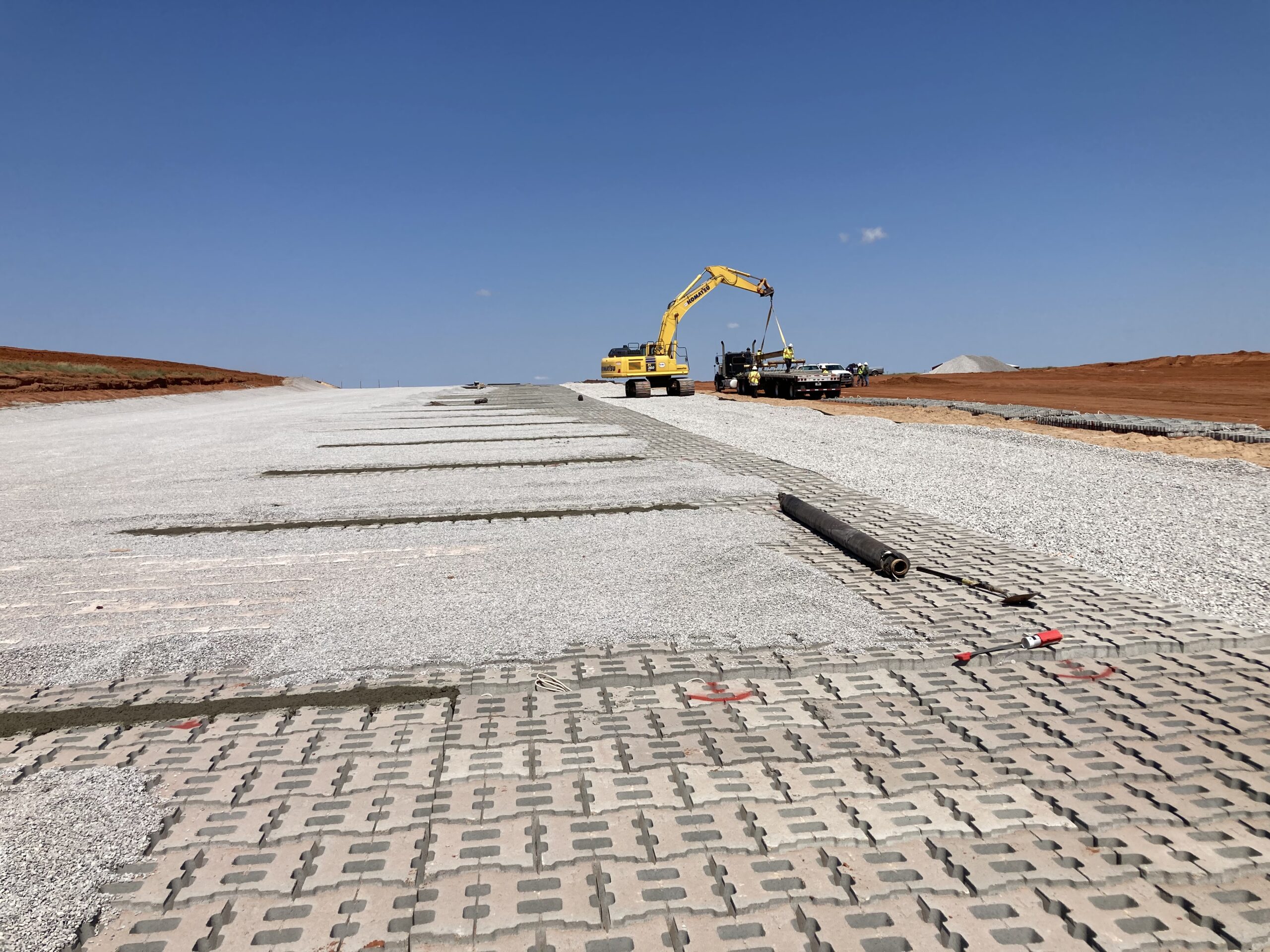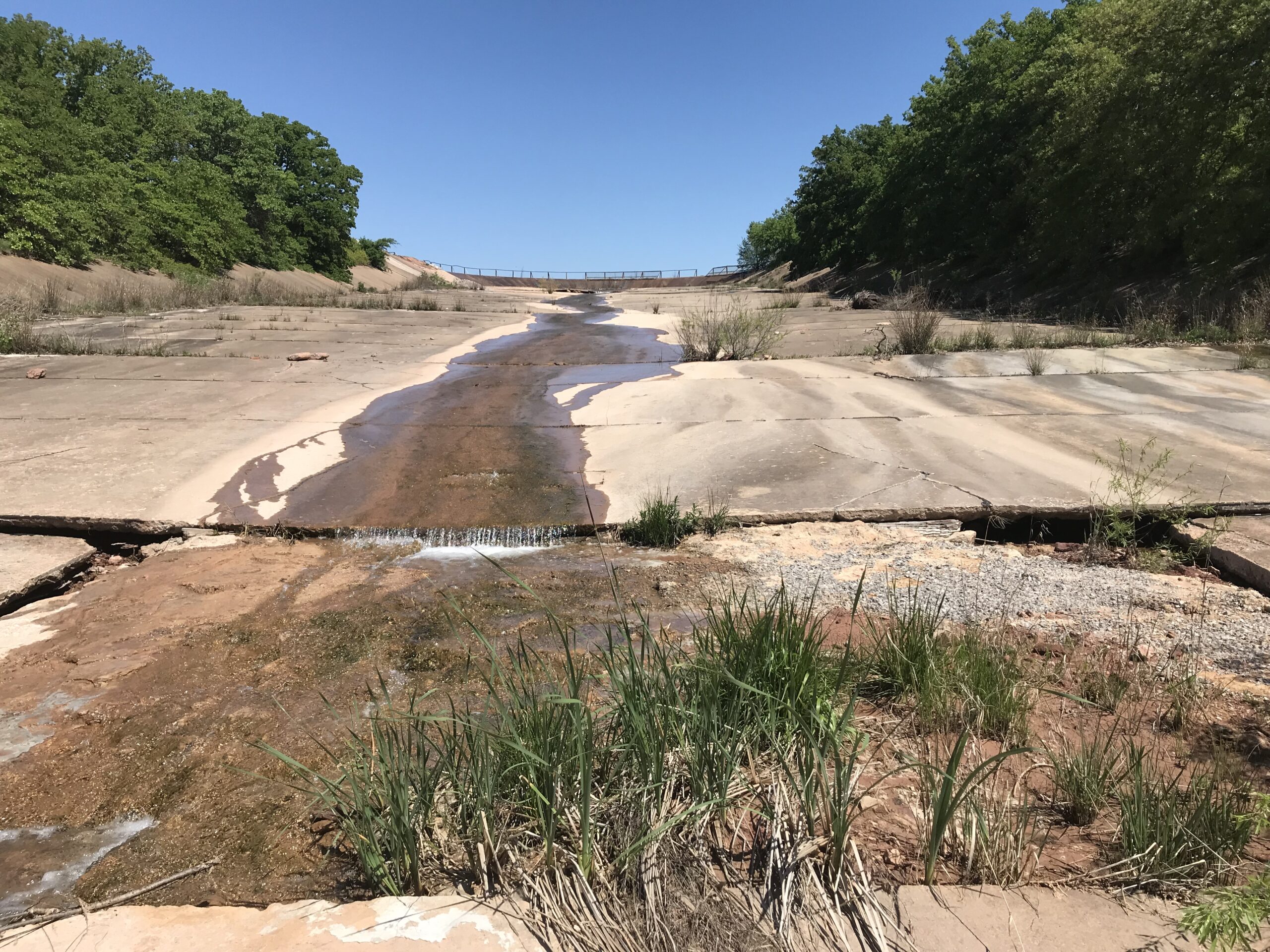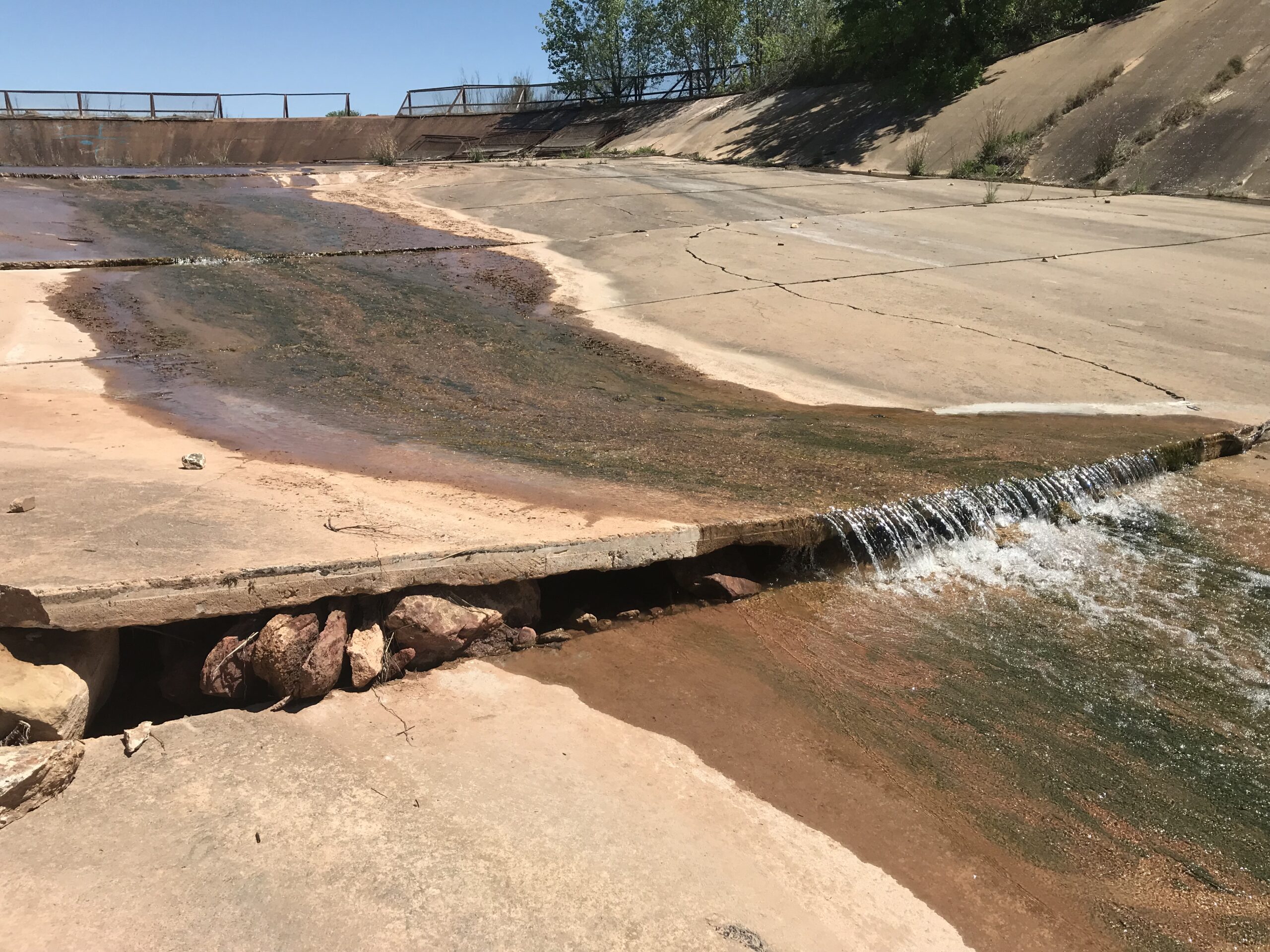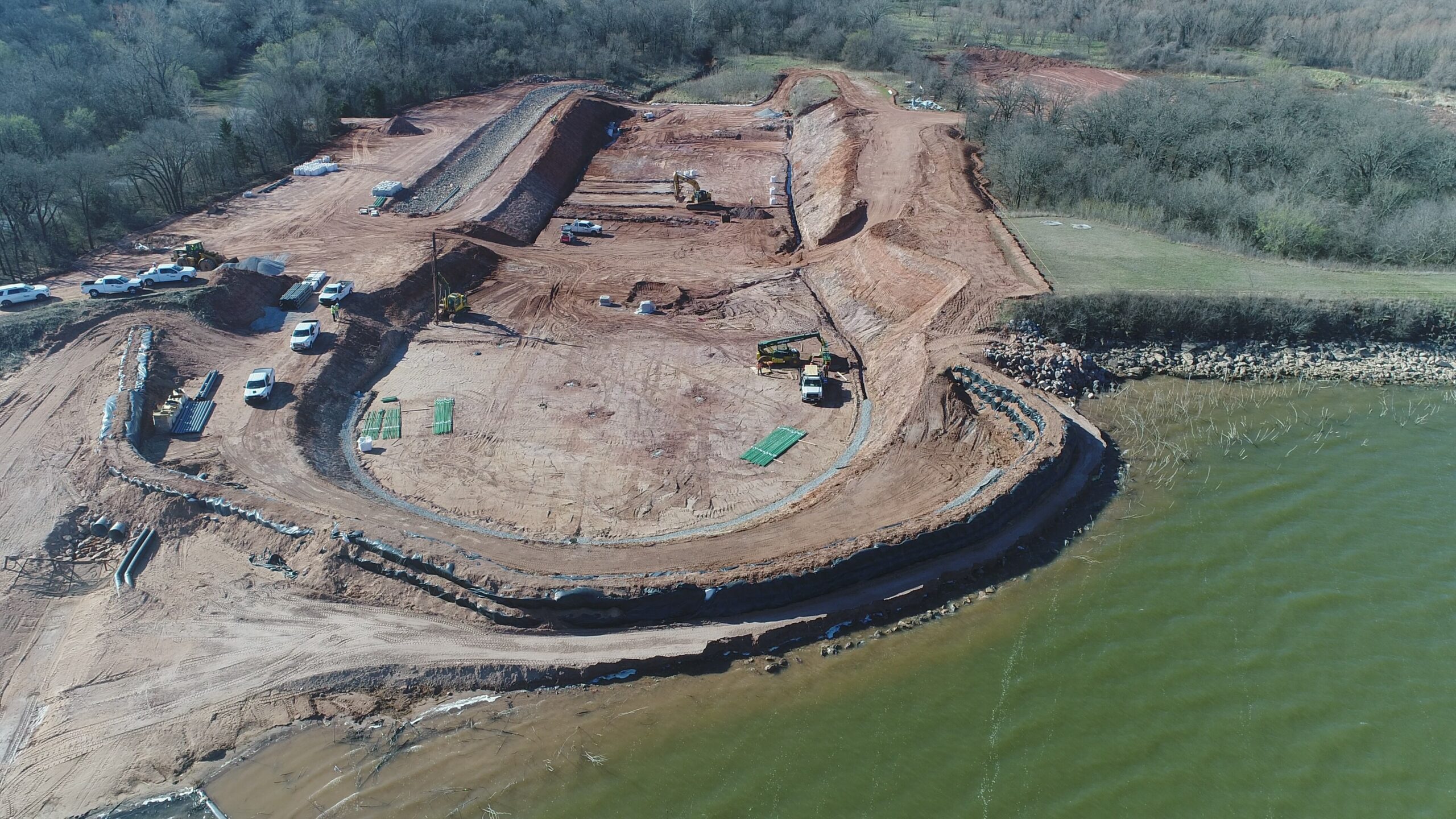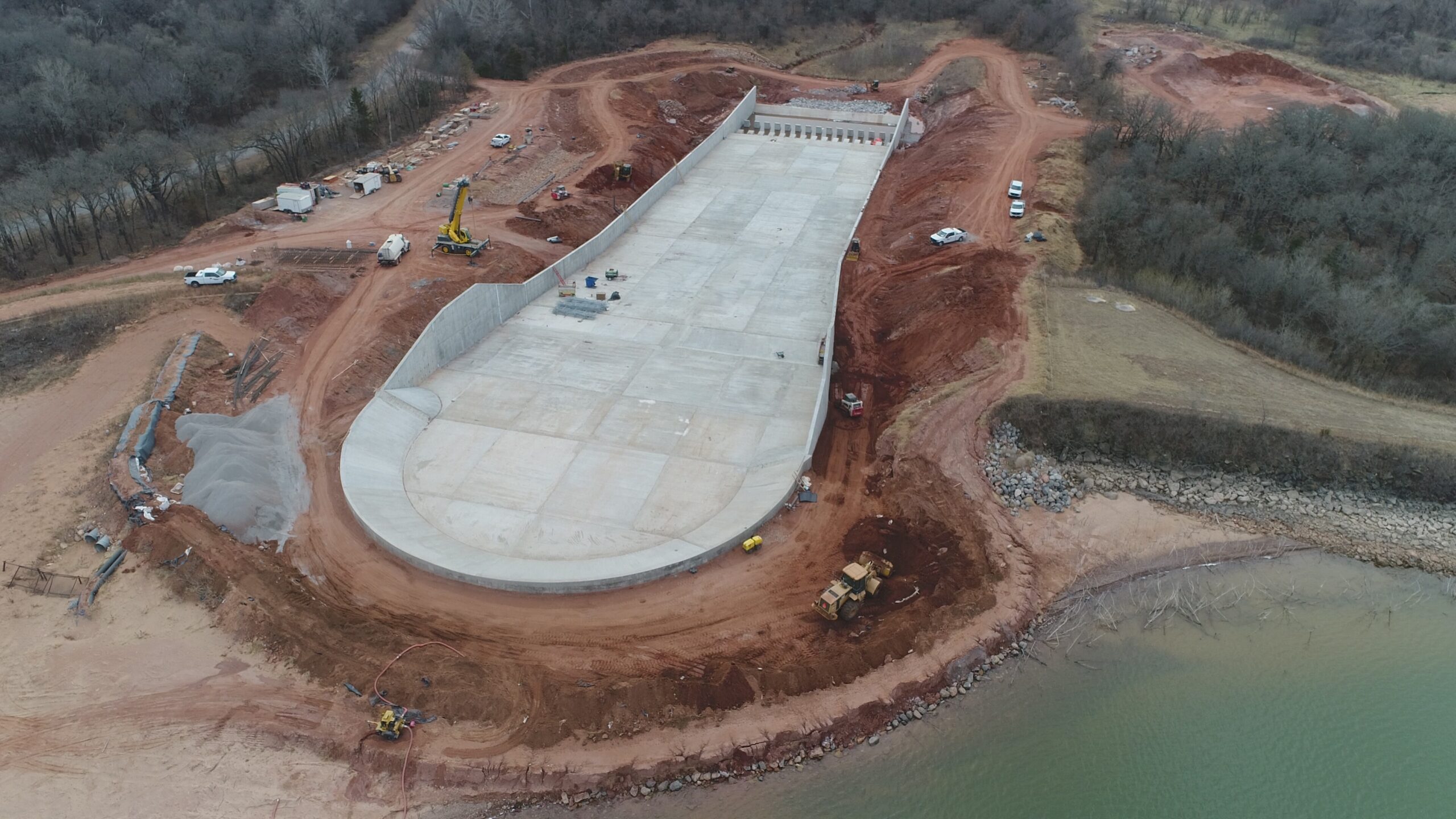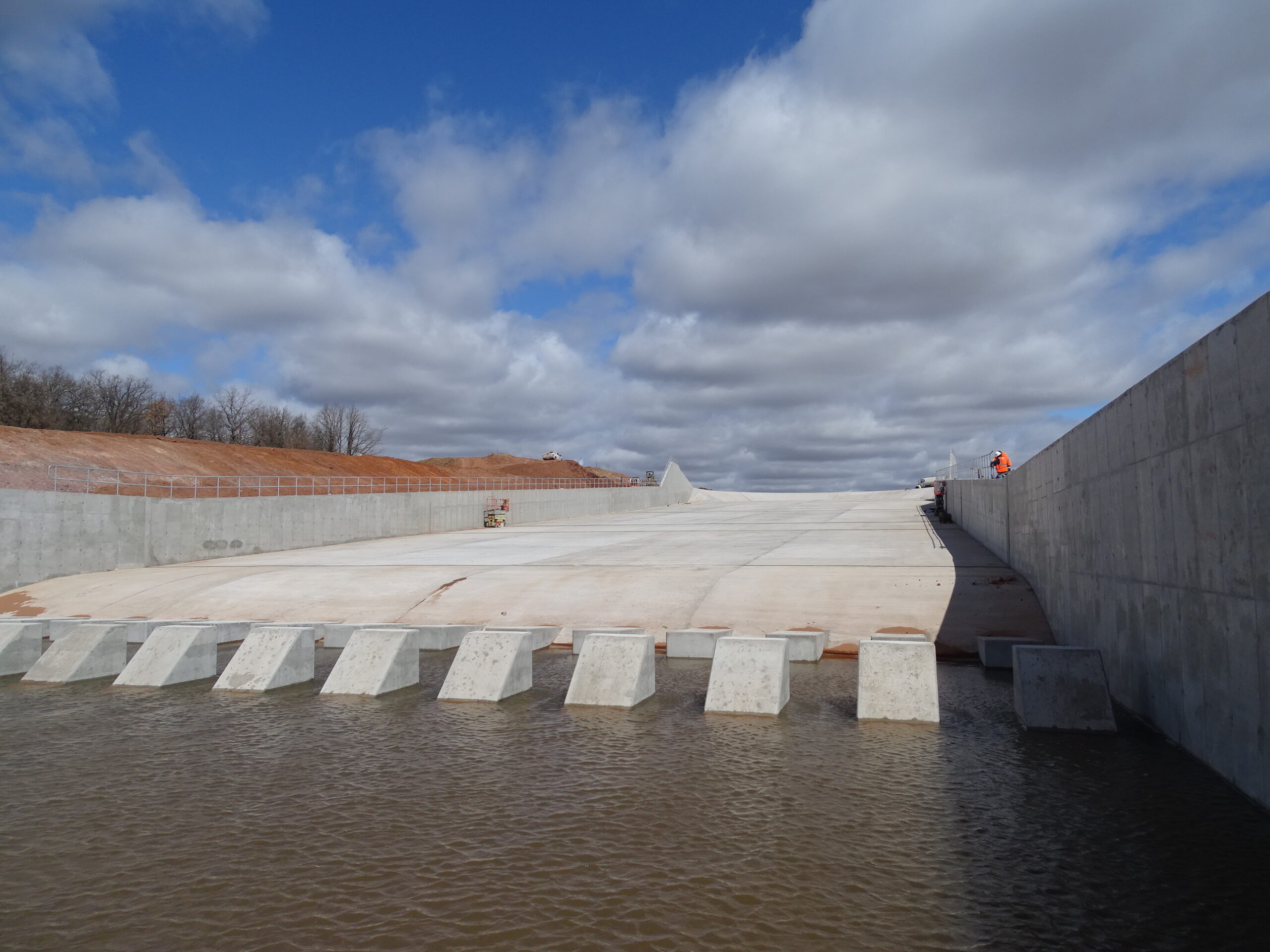Extending the Lifespan of Oklahoma’s Dams
The secure management and operation of dams is crucial in mitigating the risk of dam failures and potential disasters.
According to the Oklahoma Water Resources Board, there are more than 4,700 jurisdictional size dams in the state. With some of those dams nearing their expected lifespan and others simply needing repairs, Freese and Nichols is collaborating with dam owners in Oklahoma to keep the structures in compliance, thereby protecting lives and properties across the state.
Upper Elk Creek Site 23D Rehabilitation
Constructed in 1976, the Upper Elk Creek No. 23 Dam in Elk City, Oklahoma, was originally classified as a significant hazard dam. With additional residential and commercial growth downstream, the dam was reclassified as a high hazard dam. Due to increased risk of life and property from a potential dam breach during extreme floods, Upper Elk Creek was rehabilitated to meet more stringent standards.
Freese and Nichols, in collaboration with the NRCS, took a unique approach to update the dam, enhancing its ability to safeguard lives and property.
“Dam rehabilitations like this often require expanded auxiliary spillways to meet higher flow passage requirements,” Project Manager Colin Young said. “Upper Elk Creek would not be able to handle the new flow updates in its original form with a grass-lined channel.”
In an innovative move, articulated concrete blocks were used to armor the spillway, effectively preventing soil erosion from spillway flow and potential dam breaches. This marked the first time Oklahoma-NRCS used articulated concrete blocks in a dam rehabilitation project.
The dam upgrades also included widening the auxiliary spillway, installing a new reinforced concrete intake riser, conduit, and impact basin for principal spillway flows. The maximum discharge for the auxiliary spillway is 12,800 cubic feet per second.
Upper Elk Creek No. 23 is a flood control dam. Oklahoma’s 2,107 flood control dams not only protect lives and property, but also serve as water sources for livestock and irrigation, wildlife habitats, and in some cases, municipal water supplies and recreational areas.
Most of Oklahoma’s flood control dams were designed for a 50-year lifespan, and occasionally require updates to comply with federal and state standards from the Natural Resources Conservation Service (NCRS) and Oklahoma Water Resources Board (OWRB).
According to the Oklahoma Conservation Commission, the rehabilitation extends the service life of the dam for at least a century.
Clear Creek Lake Dam
Clear Creek Lake Dam, in the City of Duncan, Oklahoma, is a water supply lake. Constructed in 1948, the dam is classified as a significant hazard structure. A breach of the dam could potentially result in the overtopping of several downstream roads and bridges.
Freese and Nichols partnered with the City of Duncan after concerns over the concrete spillway degradation. The horseshoe-shaped concrete weir and spillway chute were severely damaged due to water leakage underneath the structure.
“Water was getting underneath the spillway from the lake and eroding it from the bottom side,” Colin said. “The leakage had blown out several slabs and it was in really bad shape.”
After an analysis, it was determined that the overall size of spillway or height of the dam would not need to be altered, but the damage was so severe that a new spillway structure was required.
“We replaced the spillway and kept the horseshoe shape,” Colin said. “It includes vertical concrete walls and a stilling basin with energy dissipators.”
Rock anchors were used to resist potential uplift in the top and lower portions of the spillway and an underdrain system was used for uplift control in the 600-foot-long chute section. A 10-foot-deep concrete cutoff wall under the new spillway was also constructed into the underlying bedrock as an additional measure to lower the risk of repeat under-seepage.


